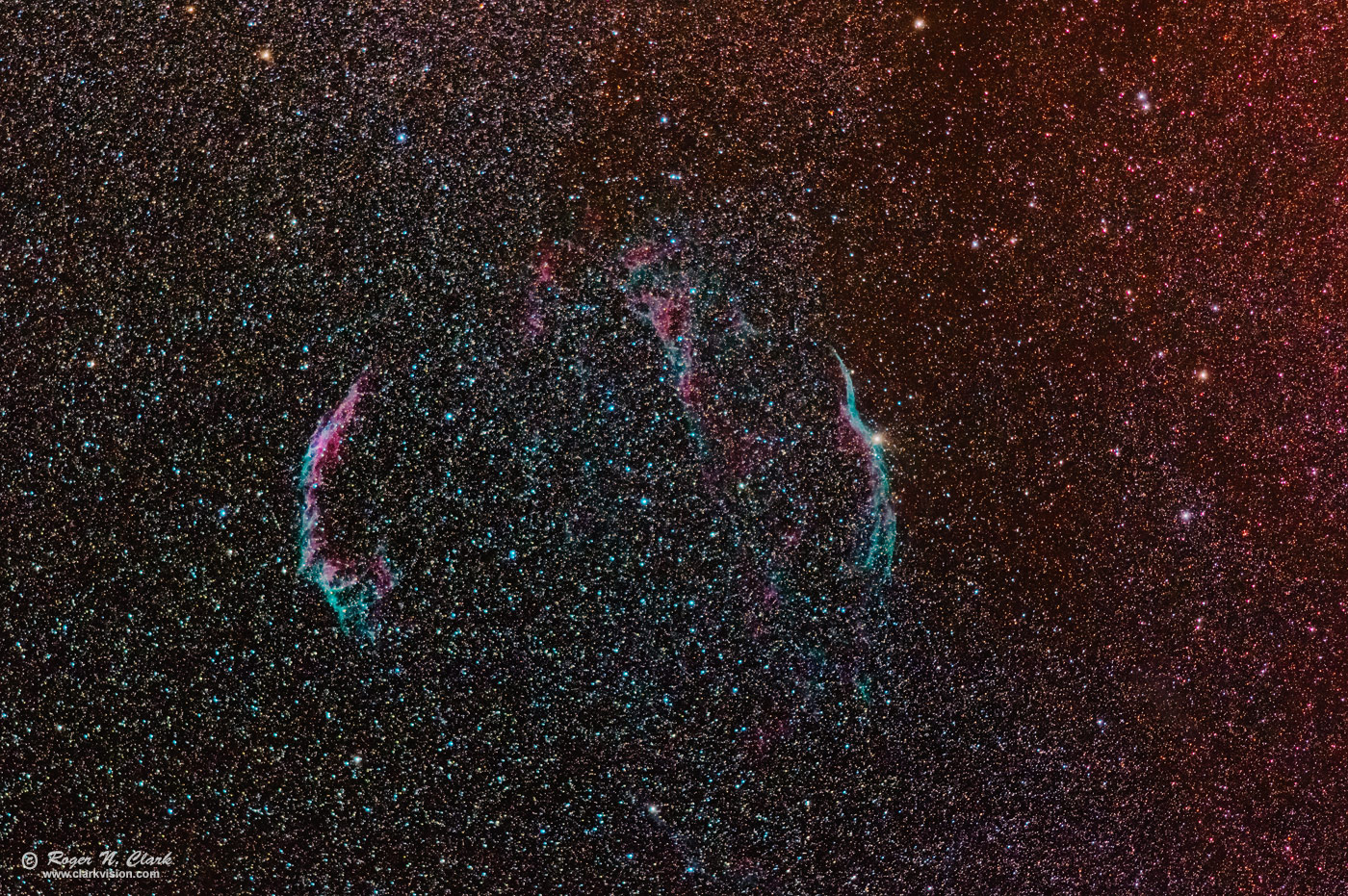| Home | Galleries | Articles | Reviews | Best Gear | New | About | Contact | Gallery Index | Previous |
Next |

| Home | Galleries | Articles | Reviews | Best Gear | New | About | Contact | Gallery Index | Previous |
Next |

The Veil nebula is a beautiful supernova remnant in Cygnus visible in amateur telescopes. The western side (right) borders a region of thicker red-orange interstellar dust, near the bright star 52 Cygnus. The nebula around 52 Cygnus is designated NGC 6960, while the eastern side is NGC 6992-5, and the top center is Pickering's Triangle.
Technical. This image was obtained with a Canon 7D Mark II 20-megapixel digital camera and a Canon 200 mm f/2.8 L lens at f/2.8 and ISO 1600. No dark frame subtraction, no flat fields. Tracking with an Astrotrac and no guiding. The total exposure was 40 minutes: 40 one-minute exposures. Almost full image, small crop from multi-frame positioning.
The stars are a little too cyan in this image due to a slight drift in focus due to temperature changes. I threw out over half the frames due to this problem. The out of focus increased chromatic aberration too much to be corrected.
The Exposure Factors, CEF, CEFA are measures of the relative amounts of light received from a subject. It can be used to fairly compare wildly different lens/telescope apertures and exposure times. For this image:
Modern DSLRs like the Canon 7D Mark II include on sensor dark current suppression and low fixed pattern noise at ISOs around 1600 and higher, making no need for dark frame subtraction. Modern raw converters correct for light fall-off and also correct for hot/dead/stuck pixels. This makes processing low light images easy: simply align and average. See my series on Astrophotography Image Processing for more details.
The color balance is close to true color, meaning this is a stock camera with very close spectral response similar to the human eye. Astrophotographers often modify cameras for increased sensitivity to Hydrogen-alpha emission (red). Hydrogen emission nebulae actually appear pink due to H-alpha (red), H-beta (blue) and emission from other atoms, like oxygen and sulfur. Modified cameras over emphasize H-alpha, making hydrogen emission nebulae come out red in photos. Unmodified cameras do a better job at color separation of the various processes that occur in the deep sky.
To learn how to obtain stunning images like this, please visit my Extensive Articles on Photography .
Keywords to this image = astrophoto-1 nebula low-light digital_astro canon_7d2
Image ID: veil.nebula.200mm.c07.25.2015.0J6A4279-327.g-1400s.jpg
| Home | Galleries | Articles | Reviews | Best Gear | Science | New | About | Contact |
Last updated November 03, 2025